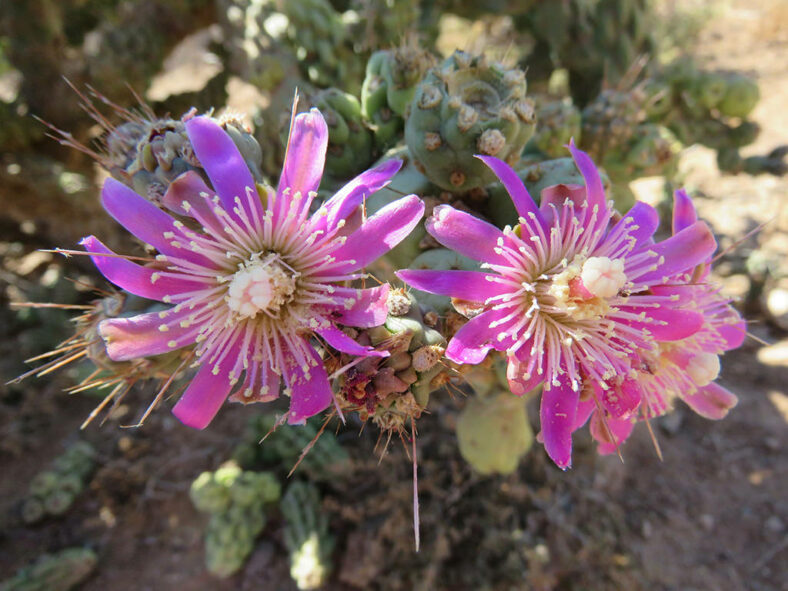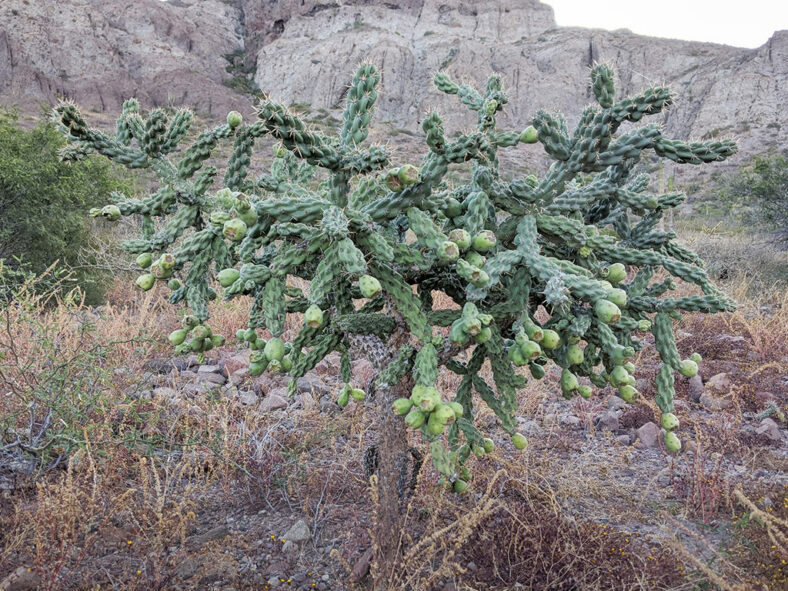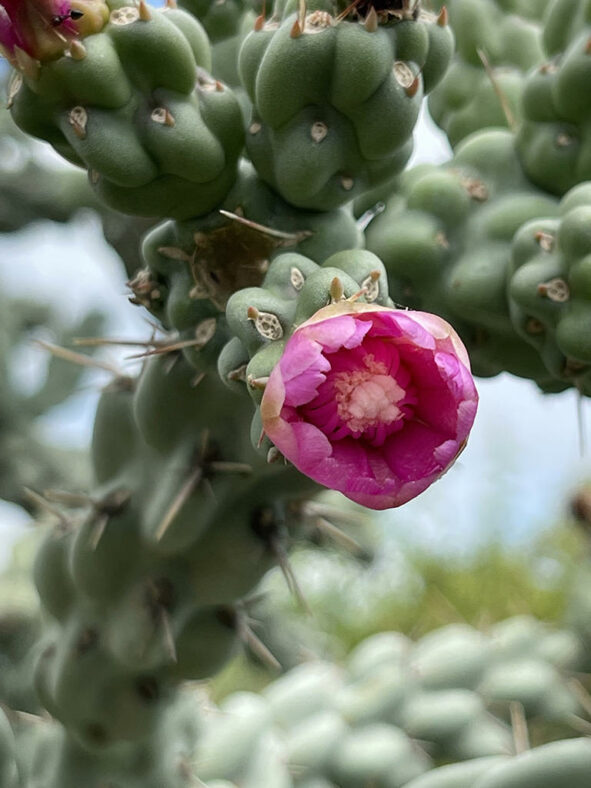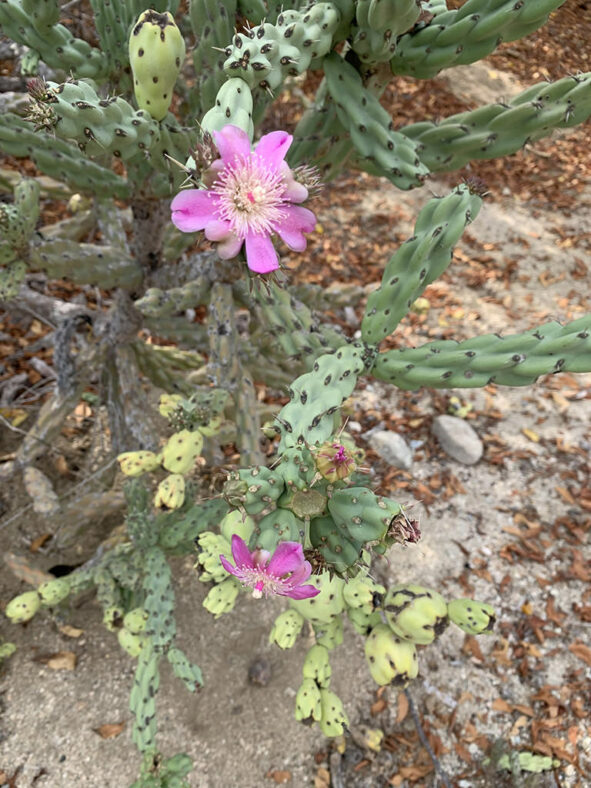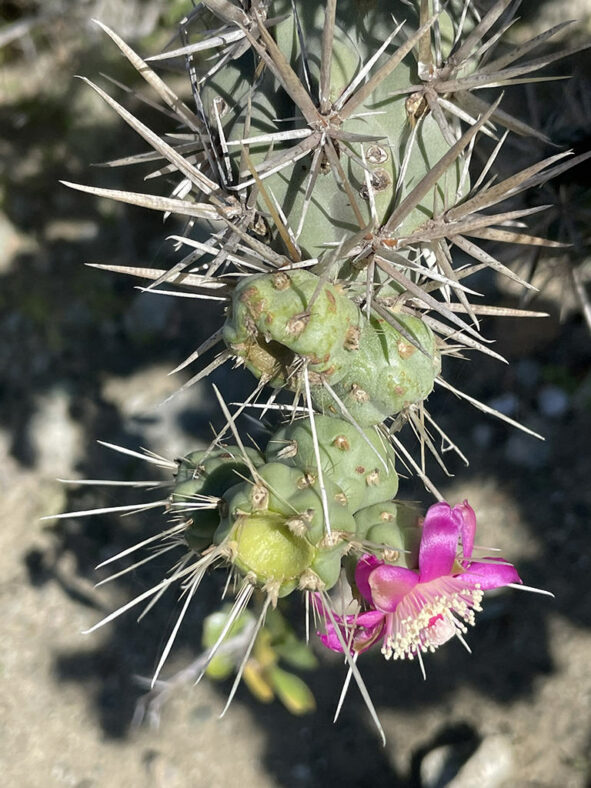Cylindropuntia cholla was first described as Opuntia cholla by Frédéric Albert Constantin Weber (1830-1903) in 1895.
Scientific Name
Cylindropuntia cholla (F.A.C.Weber) F.M.Knuth
Common Name(s)
Baja California Cholla, Chain-link Cholla
Synonym(s)
Grusonia cholla, Opuntia cholla
Scientific Classification
Family: Cactaceae
Subfamily: Opuntioideae
Tribe: Cylindropuntieae
Genus: Cylindropuntia
Etymology
The specific epithet "cholla" (pronounced KOL-luh) is a vernacular name for the Cylindropuntia plants in Mexico.
Origin
Cylindropuntia cholla is native to Mexico. It grows in desert and coastal sage scrub in Baja California, Baja California Sur, and many off-shore islands in the Gulf of California.
Description
Cylindropuntia cholla is a shrubby or tree-like cactus with a distinct trunk and segmented stems with prominent tubercles. It can be sparsely to densely branched and grow up to 10 feet (3 m) tall, with a trunk reaching a diameter of up to 6 inches (15 cm). The cylindrical stem segments are gray-green, easily detached, and can measure up to 4.4 inches (11 cm) long and 2.2 inches (5.5 cm) in diameter. The spines are brownish with yellow tips, aging to dark gray, and can grow up to 1.8 inches (4.5 cm) long. Each areole usually bears 5 to 16 spines, often accompanied by a tuft of short, dark yellow glochids. The spines may be absent at some areoles.
During the late spring and early summer, Cylindropuntia cholla produces pale pink to deep purple flowers at the tips of the upper stem segments. The flowers can reach a diameter of 1.2 inches (3 cm). The spinless fruits are green, turn yellow when ripe, and contain numerous tiny, tan-colored seeds. They are barrel-shaped or pear-shaped and can grow up to 1.6 inches (4 cm) long and 1.4 inches (3.5 cm) in diameter.
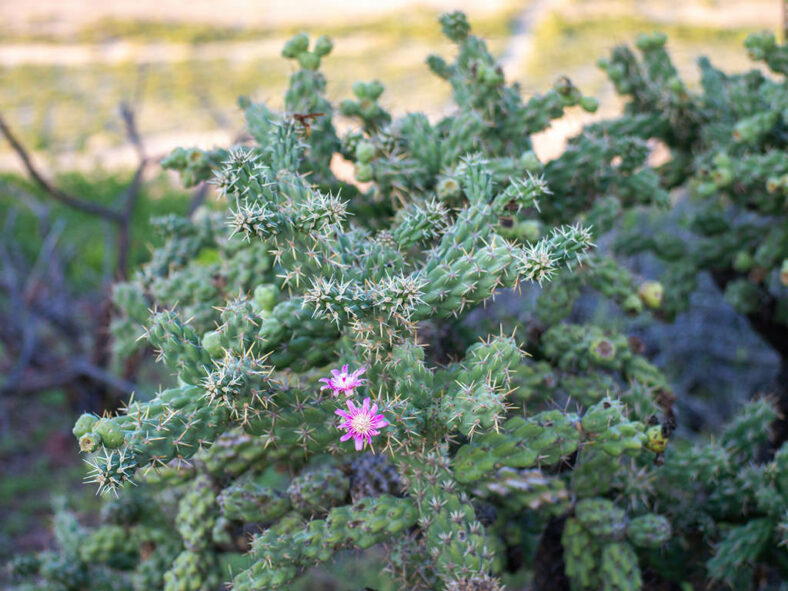
How to Grow and Care for Cylindropuntia cholla
Light: Cylindropuntia cholla thrives in full sun, but some shade during midday and afternoon can prevent sunburn in very hot climates. A window that receives sunlight 6 hours a day works best when grown indoors.
Soil: This cactus requires a soil mix that drains well. So, use a commercial cactus potting mix or create your own.
Temperature: Extremely tolerant of high temperatures, Cylindropuntia cholla prefers cooler temperatures in winter. It grows best in USDA Plant Hardiness Zones 9a to 10b, with average minimum winter temperatures ranging from 20 to 40 °F (-6.7 to 4.4 °C).
Watering: From spring to fall, water moderately and let the soil dry out completely before watering again. In most areas, rainfall will be enough for established plants. If potted, never let the container sit in water. During the winter, suspend the watering.
Fertilizing: Cylindropuntia cholla does not need fertilizer when planted in the ground. However, it will benefit from fertilizing during the growing season when grown in a container. Apply a water-soluble fertilizer. Suspend feeding during the winter when the plant goes dormant.
Repotting: Repot only when the cactus becomes potbound or is too large and unstable in its container. Choose a slightly larger container with drainage holes at the bottom. The best time for repotting is late winter or early spring.
Propagation: You can propagate Cylindropuntia cholla by stem segments or seeds. Using stem segments is the easiest method and yields faster results. For best results, take stem segments in early summer. Sow the seeds in late spring.
Learn more at How to Grow and Care for Opuntia.
Toxicity of Cylindropuntia cholla
Cylindropuntia cholla is not toxic to humans or pets. However, keep the plant away from pets and children as it has harmful spines and glochids that may cause skin irritation.
Links
- Back to genus Cylindropuntia
- Succupedia: Browse succulents by Scientific Name, Common Name, Genus, Family, USDA Hardiness Zone, Origin, or cacti by Genus
Photo Gallery
Click on a photo to see a larger version.
